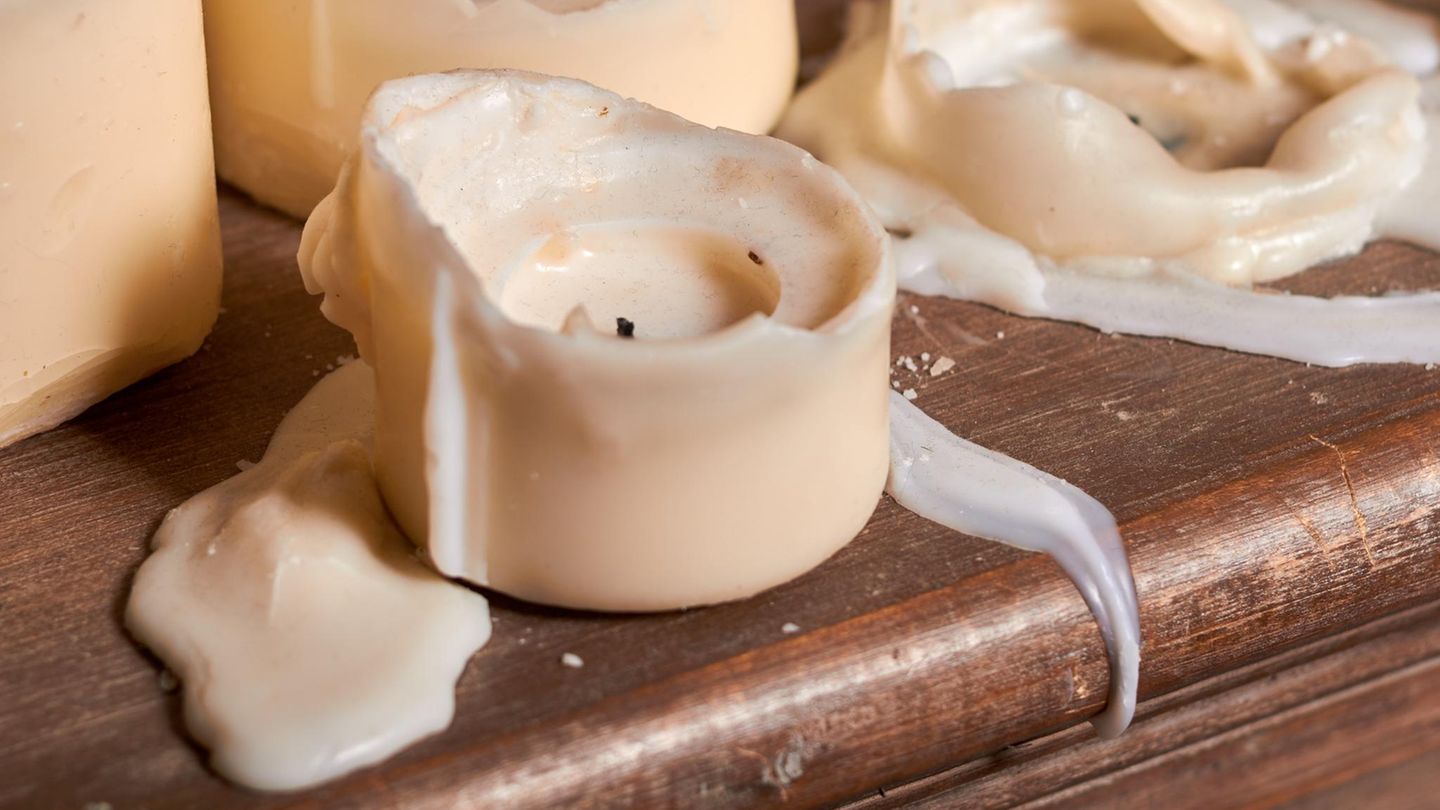Candle out – stain there
How to remove wax stains sustainably and without residue
Copy the current link
Add to the memorial list
Whether candle wax on tablecloths or on the parquet: residues and spots made of different materials can be reliably removed – with the right technology.
Candles bring atmosphere and often leave a sticky trace. Whether dinner with flickering light, on the Advent wreath or at a garden celebration: a moment of carelessness is enough, and hot wax drips on fabric, wood or tiles. While the moment can often be forgotten quickly, the traces remain visible and are difficult to eliminate without the right method.
Wax is an idiosyncratic dirt: it consists of fat, becomes liquid when heated and quickly hardens when cooling, sometimes so firm that it connects to the surface. If you apply the wrong technology, you can do more damage than remove. Wax can move into the tissue, discolor textiles or damage wooden surfaces. But with the right tool, a little patience and the right procedure, wax stains can be removed from almost all materials – from the linen tablet ceiling to the wooden floor.
Remove wax stains from textiles
Fabrics are among the most sensitive materials when it comes to wax, especially bright cotton or linen. Under no circumstances should you try to remove the fresh spot with warm water or even rubbing. Because that only distributes the wax deeper into the fibers. Instead, let cool first. A simple method is to freeze the affected fabric – either by inserting into the freezer or, for larger textiles, by laying on a bag filled with ice cubes. As soon as the wax is fully hardened, it can be carefully scraped off with a blunt knife or a plastic card.
What usually stays after that is a greasy shade. To get it out of the fabric helps warmth: you put two layers of sucking kitchen paper or lion paper on and under the spot and carefully iron it with medium heat. The wax melts again and is soaked up by the paper. This process should be repeated several times, whereby the paper is always replaced as soon as it is soaked. If you want to be on the safe side, use a special wax remover spray for textiles that solve fat and dyes free of charge. Products like the are suitable for this, provided that the fabric is color -right and not too sensitive. A final machine wash at the highest possible temperature rounds off the cleaning.
Remains of wax on wood and furniture
Special caution is required on furniture and floors made of wood, because the material is porous and sensitive to heat and chemicals. After cooling, rough wax residues can be carefully removed with a wooden spatula – a kitchen helper made of plastic or a united customer card is also suitable. What remains is often a light film or a matt spot. A hair dryer helps here: at the lowest level you heat up the area until the wax is slightly melting again. A absorbent paper towel should be pressed onto the spot that sucks the fat. Important: Do not work too hot so that the surface does not suffer. With sensitive types of wood or oiled surfaces, it is better to do without cleaning agents and instead on a gentle furniture care spray like that to resort. This removes wax residues and at the same time refreshes the treated area. For stubborn cases, a furniture soap with a dashing effect is recommended, which can also solve old residues without drying out the wood structure.
Wax spots on tiles, glass and stone
In contrast to textiles or wood, wax stains can usually be removed on smooth surfaces, provided that the correct order can be selected. The following also applies here: let cool first, then carefully lift off. An ice pack pack accelerates the hardening, after which the wax can be completely removed with a ceramic hob scrap or a jar. However, this is often not enough for tiles with a rough surface or open -pore stone. Wax can seep into small recesses and leave unsightly shadows. In such cases, a solvent -based wax remover as the the applied, let it in briefly and then be removed with warm water. Alternatively, alcohol -based means, for example, isopropanol in combination with a soft cloth – only work – but only with insensitive surfaces. In the case of natural stone, you should check beforehand whether the cleaning agent is suitable for the respective type of rock.
When wax leaves color
Particularly colored candle wax is tricky: it can usually be replaced mechanically well, but the pigments it contains penetrate many materials. A red or blue shadow can then remain on clothing, napkins or tablecloths, which is difficult to remove with home remedies. Special stain remover helps here, which also bind color pigments and oils. The For example, colorful residues are suitable and does not attack the fibers even with sensitive fabrics. It is important not to apply it to it selectively but flat so that no edges arise. After the exposure time, the fabric should be washed as hot as possible. If you want to be absolutely sure, choose detergent with an integrated active oxygen or add a laundry amplifier that works on a bleaching basis.
Primerons and avoid wax problems
The safest method for wax stains is not to be created in the first place. Sounds simple, but is not always practical in everyday life. Nevertheless, it is worth placing candles on coasters with a high edge or using drip protection cuffs. For outside candles, lanterns with glass use are recommended, because they not only prevent tipping over, but also catch wax reliably. And if something goes wrong, you should not panic, but start with calm, the right technology and the right helpers. Because almost every wax stain can be removed free of charge.
*This article contains so-called affiliate links to products in online shops. If a user clicks on it and buys something, the publisher receives a commission from the dealer, not from the manufacturer. Of course, where and when you buy a product is up to you.
Source: Stern
I am an author and journalist who has worked in the entertainment industry for over a decade. I currently work as a news editor at a major news website, and my focus is on covering the latest trends in entertainment. I also write occasional pieces for other outlets, and have authored two books about the entertainment industry.




